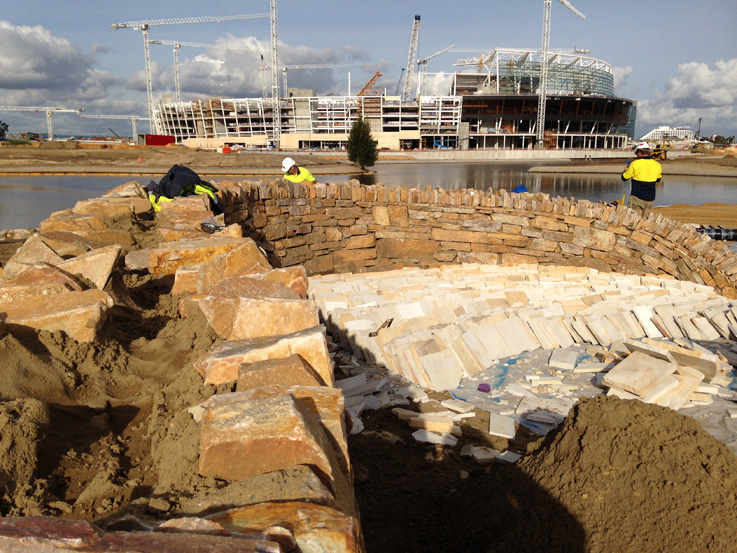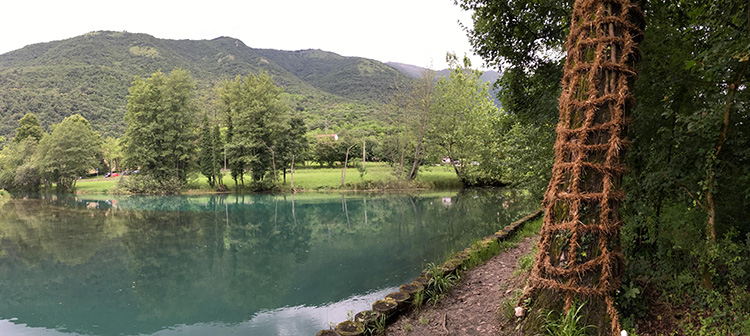In May, Chris Drury began work on The Wandering, an environmental work of art commissioned by the State of Western Australia for the site of the new Perth Stadium, sited on the south bank of the Swan River, overlooking the city to the west. “The work is a meandering dry-stone wall which emerges from a stone whirlpool on the isthmus of the lake to the south, winds its way north in a series of loops, and descends again into the earth on the higher ground, “ says Drury. It appears to have no beginning or end, arising from the high ground in the north and plunging into the stone whirlpool to the south (or vice versa). The wall is 190 meters long and covers a distance of 90 meters as the crow flies.
This structure, however, is no ordinary wall, for it will be built as a Cornish dry-stone hedge, which is a growing, living thing: a miniature ecosystem and biodiverse habitat. In the UK some of these walls have stood for a thousand years because they are constructed with an earth infill, allowing plants to grow and give rise to habitat for insects etc, eventually binding the structure together. Here in Perth, I adapted the work to the Western Australian climate by planting the wall with indigenous drought-resistant plants, which will be irrigated.” You can see more images on Drury’s website: http://chrisdrury.co.uk/the-wandering/.
In May, Gyöngy Laky was a Special Guest at Humus Park, International Biennale V of Land Art, with a collaborating artist, Paul Discoe, northeast of Venice, Italy. Humus Park is Italy’s most important Land Art event. The Land Art is an artistic form using natural materials. Some of its numbers: 13 days, 3 locations, more than 80 artists from 13 countries all over the world, 8 art schools and academies involved. Laky was there for two weeks working onsite. “ Arriving in magical Polcenigo I heard its water symphony… beautiful, clean blue/green water flowing everywhere,” Laky says. “The sound was intoxicating and it explained the verdant green foliage all around. The sun was warm and bright. It was an awe-inspiring place. And, later when it rained and rained, it was still beautiful and I understood even more about the invigorating water gushing from the mountains.” Laky and Paul Discoe, who she invited to be her art partner, very quickly agreed on a project. “We both have worked extensively with trees and materials from trees,” explains Laky, “and we also both share a deep interest in shimenawa – rice straw ropes used in the Shinto religion to adorn sacred places. We found a magnificent tree overlooking the water and reflecting in it. We wanted to honor it. We decided to make rope from the hay provided to adorn the tree. It occurred to us that we were engaged in making something that was, probably, similar to what the ancient inhabitants of that lake dwelling site most likely made also. Rope making with plant fiber dates back to prehistoric times. We were connecting with the land and its history in, yet, another aspect.” See the artists at work at Humus Park on video: https://www.youtube.com/watch?v=5vwJg1ZYATw&feature=youtu.be&app=desktop. You can also see — and own — smaller scale works by Gyöngy Laky and Chris Drury in Green for the Get Go: International Basketmakers, at the Morris Museum, Morristown, New Jersey through June 26, 2016. All the works are for sale and we have additional works on our website. For more information: http://www.morrismuseum.org/current-exhibitions/.




